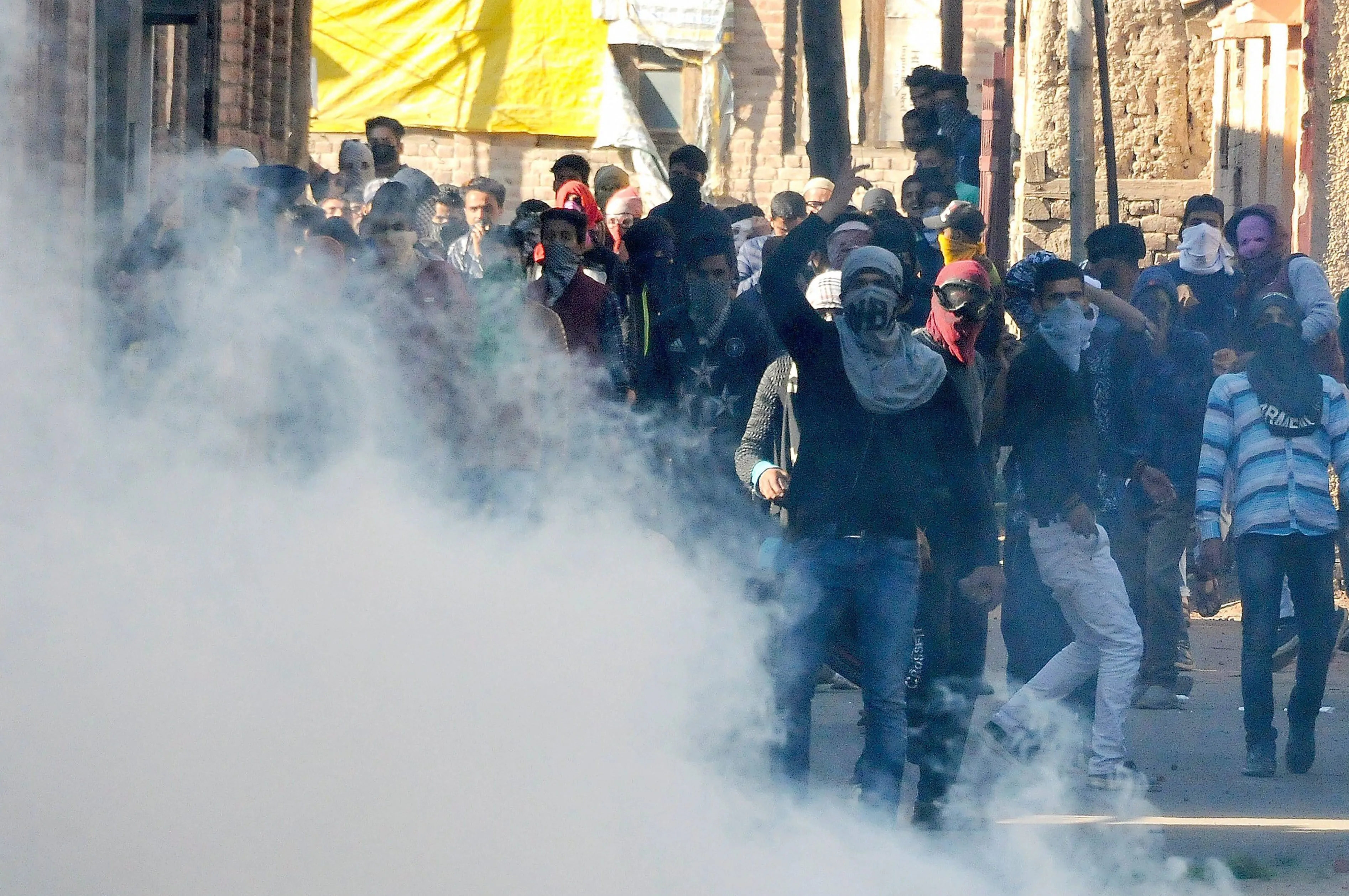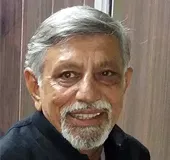
Majid Khan, a 20-year old footballer from Anantnag, who had recently joined the LeT, surrendered last weekend. He was paraded at a press conference with the police claiming that a relentless campaign on social media, based on an appeal by his mother, compelled him to surrender. The army even announced that there would be no charges against him and he would be free, in addition to it supporting his further studies. Post Majid’s surrender, there are reports of one more youth having shunned the path of violence. The police and army are now making a bid seeking more surrenders, aiming to draw local youth away from the clutches of militancy.
This is not the first time that surrenders have occurred in militancy affected areas.
This is not the first time that surrenders have occurred in militancy affected areas. Assam and other northeastern states witnessed many surrenders, so did Jammu and Kashmir (J&K) in the past. The J&K government had multiple surrender policies, which kept being modified with time. There was one in the early nineties, followed by another in 1997. Subsequently two more were announced. The first in 2004 was for militants belonging to the state, the second in 2010 for Kashmiri militants residing in Pak, who wanted to return. All had some response. While many surrendered militants in J&K went back into militancy, those from Assam and other northeastern states did not. Where was the difference?
Mainly it was the nature of militancy. Eastern militants were local youth and had no infiltrators heading militant groups, though it had support from forces inimical to Indian interests. Hence, there were limited threats and killing of surrendered militants. Every surrendered militant was expected to receive a grant from the state government, in addition to recognition by means of an identity card. Surrendered militants even organise their own conference in Assam, the last Prakton ULFA Samanoy Sammelon (Conference of former ULFA cadres), being held in May this year at Digboi, Assam.
While many surrendered militants in J&K went back into militancy, those from Assam and other northeastern states did not. Where was the difference?
At the conference, Bijoy Hazarika, the secretary, stated that of at least 10,000 surrendered cadres, over 7500 militants, who had shunned violence between 1998 to 2005, are yet to get any government aid. The government has not even withdrawn cases against them.
The Chief Minister of Manipur, N. Biren Singh, referring to the case of surrendered groups in his state, stated in Delhi, in May this year, that the surrender policy designed for militants was a total failure. He said, “It is disappointing that there is no proper supervision over the outfits which have joined the mainstream. This has rendered the surrender policy meaningless.”
In J&K, there were reasonable number of surrenders in the past. In 1995, many local militants quit militia organisations like the HM because of the mindless killings. Ex-militia were offered lucrative rehabilitation packages by the State and Centre. The Centre also created the Ikhwan force, as a pro-government militia, comprising of surrendered militants. They were paid and supported by Indian security agencies. Between 1994-98, pro-government militants became an extremely potent weapon in the counterinsurgency campaign. They helped security forces identify wanted militants and even dealt their own brand of justice, resulting in court cases, running even now. Many also contested the 1996 elections.
With their own security remaining questionable, the houses and family members of the Ikhwan were targeted by Pakistan supported militants. Post the government declaring a ceasefire in November 2000, militants began regaining the upper hand. It is rumoured that approximately 150 Ikhwani members and police informers were eliminated during the ceasefire and as per police sources, over 500 Ikhwanis or those working with them, rejoined militant ranks. A pro-government militant leader, Papa Kishtwari, even stated that ‘half of my boys who were promised decent jobs and security have re-joined militancy.’ The government failed in delivering its promises. The Ikhwan founder, Mohamed Yusuf, also known as Kuka Parrey, was also gunned down in September 2003.
According to a newspaper report on December 2007, over 4,000 militants had surrendered since the commencement of militancy in the valley till then. However, there were no serious efforts to enforce a policy to handle surrendered militants. In the early nineties, the surrender policy implied that each militant on surrender was entitled to ₹1.5 lakh in cash and gainful employment. Subsequently, the policy was modified depending on the ground situation. Militants had to surrender before the police, spend two months in the joint interrogation centre and report to the nearest police station once a week. Many were unwilling on these terms, claiming harassment.
There were no serious efforts to enforce a policy to handle surrendered militants. In the early nineties, the surrender policy implied that each militant on surrender was entitled to ₹1< style="cursor: pointer;text-decoration: underline">. 5 lakh in cash and gainful employment.
Subsequently, the State cabinet vide its decision no 96/10 of 24 April 1997, accorded sanction for implementing State employment schemes for surrendered militants. Under this scheme, banks were instructed to finance the setting up of micro/small units covering industrial and private sectors to be run by surrendered militants. Banks refused to implement the scheme, fearing losses and it failed, leaving surrendered militants disappointed and angry.
On 24 February 2009, the Union Home Minister of State gave a reply in the Lok Sabha, where he stated that surrendered militants were being provided ₹2,000 per month for three years and the amount of ₹1.5 lakh given as initial payment was invested in a fixed deposit, to be withdrawn after a period of three years, based on good behaviour of the surrendered militant. However, there was growing unrest amongst the surrendered militants as the government failed to fulfil its commitment to rehabilitate them suitably. An article in Kashmir Life, in October 2013, stated that surrendered militants, who had crossed over from Pakistan, claimed that they were even denied basic documents like ration and identity cards and many returned to join militant ranks.
There was growing unrest amongst the surrendered militants as the government failed to fulfil its commitment to rehabilitate them suitably.
Security forces, based on government directions, have relaunched calls for surrender from local militants. While it has begun showing results, however the question arises, how prepared is the state and its agencies to implement surrender policies and rehabilitate surrendered militants. Leaving them without court cases may not alone be the answer, as pressure and threats to them from militant groups to rejoin may remain. Hence, an important action for the government is to ensure security for the surrendered militant and his family. Failing to do so may compel him to rejoin his earlier cadre, fearing reprisals. For militant groups surrendering of its ranks is loss of face, while for security forces it is a success. Hence both sides would attempt to gain the upper hand.
Read: Pace the key for interlocutor’s success in Kashmir
Presently, there is complete domination by security forces in J&K and militants are on the run. This in itself is good news. Reports of daily encounters and culling of militants by security forces would impact those seeking to join militant ranks, as locals, untrained and ill-equipped, would find it difficult to survive for long, as has been amply proved. This could compel them to turn to softer targets like surrendered cadres.
Hence, the government must contemplate taking a few steps to ensure that militants who surrender are not coerced into returning to the militant fold.
First, they should be moved out of the district or if possible the region, to reset their lives in a different environment.
Second, the government must implement its financial package as early as possible, as most have joined militancy for financial gains.
Third, harassment by security forces by monitoring their activities should be the minimum, as excessive harassment would force them to return to the militants’ ranks. Fourth, they could be employed as motivators in the media for others.
Finally, gainful employment at an early stage would deter them from joining militant ranks and encourage others to surrender.
These policies need to be officially announced and strictly monitored by the Centre, for not only J&K but also other militancy affected states.
Sincerity by the government and security agencies, if visible and genuine, would go a long way in reducing fresh recruits from picking up the gun, and encouraging those with it to surrender. If government actions are slow, then irrespective of the goodwill generated by security forces, surrenders would be miniscule.
The views expressed above belong to the author(s). ORF research and analyses now available on Telegram! Click here to access our curated content — blogs, longforms and interviews.




 PREV
PREV


